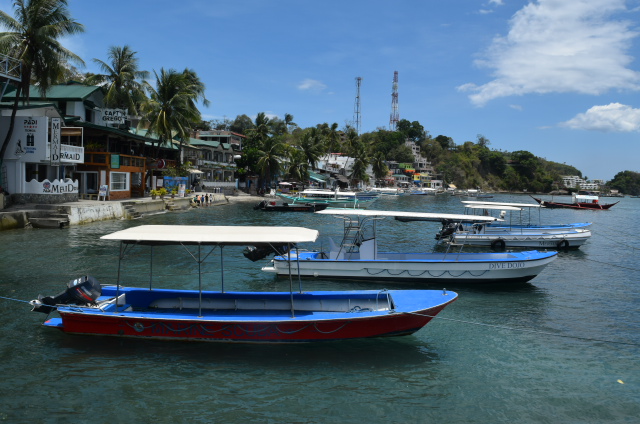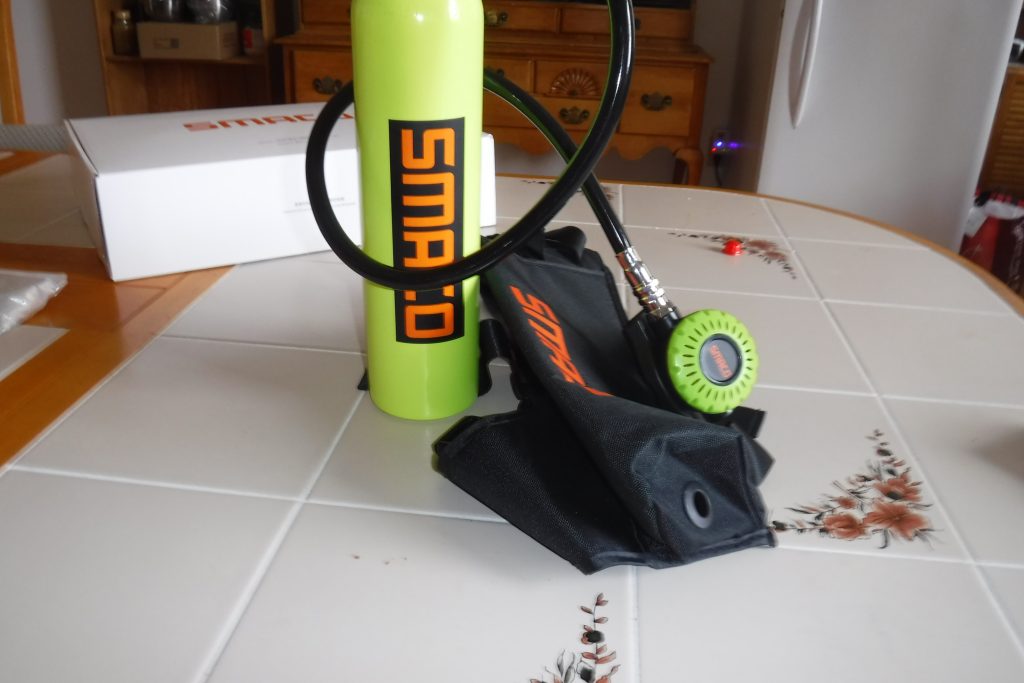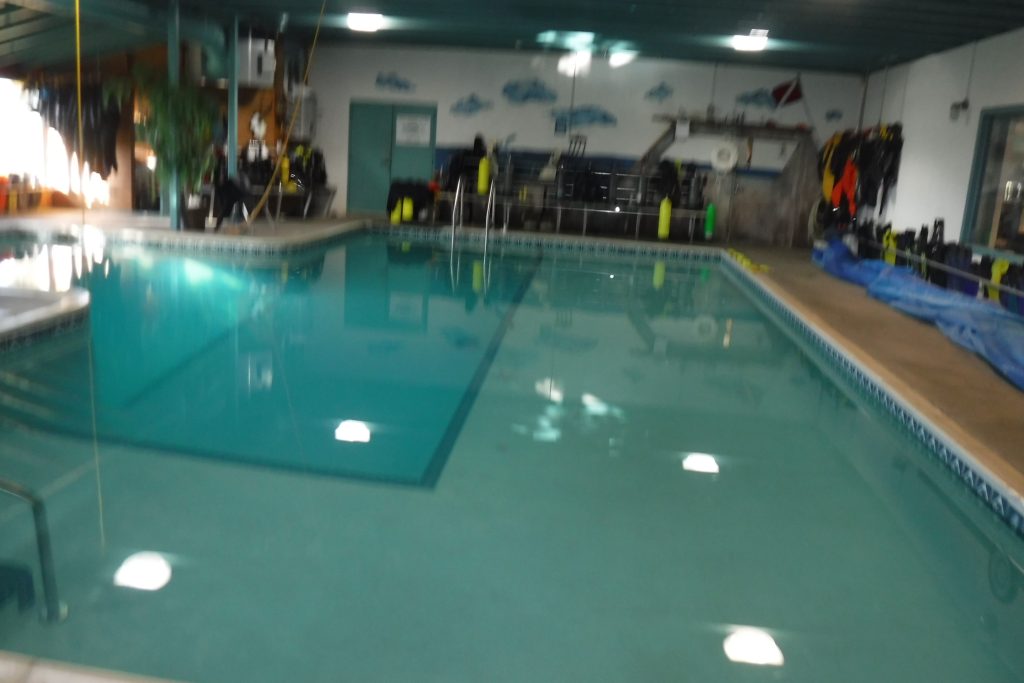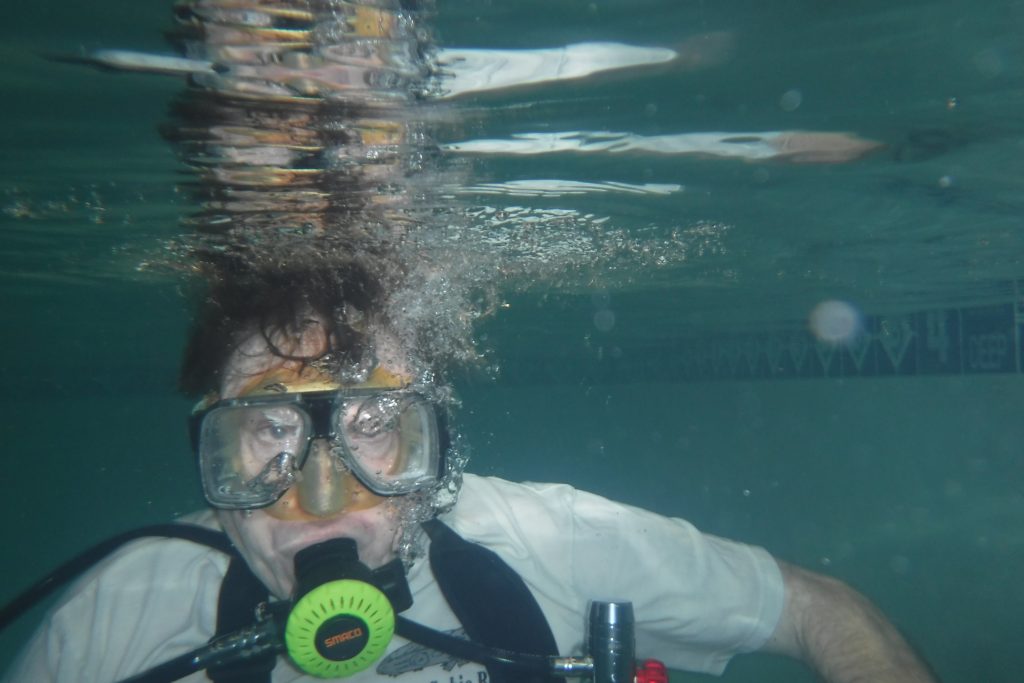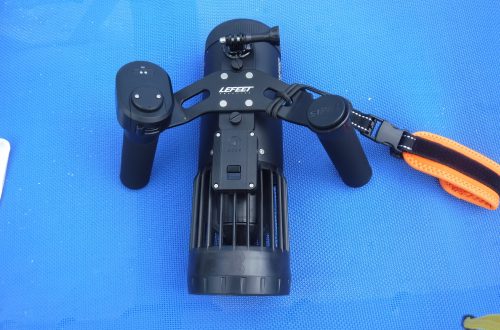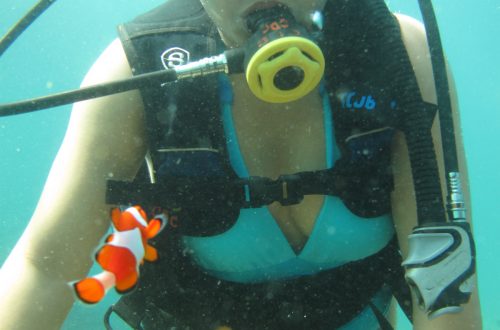
SMACO S400, An Alternate Air Source?
SMACO S400, Will It Be Your Alternate Air Source?
You may be wondering how I came about reviewing the SMACO S400. Life has some interesting twists at times. As the end of the year approached, I started to plan what type of vacation I wanted to take in 2023. One of the trips I decided on was a scuba diving liveaboard. Looking over the conditions of the trip, I saw they allowed solo diving for properly qualified divers. Therefore, I added getting certified as a solo diver to my goals for the year. Each accreditation agency that offers it has a different name for it, however, the requirements are basically the same. Redundancy is a key factor, including an alternate air supply. I started to research what was available, and develop a very short list of alternate air supplies that I was interested in. Much to my surprise and good fortune, the manufacturer of one of my shortlist items the SMACO S400 saw my review of an underwater scooter and asked me to review their product.
Developing My Short List that included the SMACO S400
Before jumping into my review, I think it is best to explain why I felt the SMACO S400 deserved to be on my list. A few years ago, I wrote an article titled “Buyer Beware”, that focused on items used in scuba diving being sold to the general public. Before internet sales became such a major factor, buying items such as scuba tanks was in a manner restricted. Few dive stores would sell you a scuba tank if you were not certified. If you did own a tank, getting it filled without being certified was nearly impossible. However, over time things have relaxed, partly due to paintball enthusiasts using scuba tanks to charge their guns. Today there are many companies making scuba tanks that are sold online, not all of which I would consider safe.
Many of these tanks are small and marketed as an alternative to becoming a certified diver. They gloss over the dangers of using compressed gases underwater. I do accept that these tanks do fill a need for people that are using them for activities that are not recreational scuba diving, such as boat inspections, and emergency air for surfers. However, users must understand the dangers involved.
Size Matters
The logical point to start qualifying an item to purchase is to determine your needs and what size tank will meet that needs. I am looking for a pony bottle, that will serve as an alternate air supply in the case of an out-of-air situation. I will be within decompression limits, so I do not need one large enough for extended decompression stops. Generally, a pony bottle used for this purpose is smaller than a staging bottle used for a multi-gas decompression dive, while there may be some overlap. You will want something large enough to provide ample air, while still small enough not to interfere with your diving and trim. I also like the concept of being able to hand over my alternate air source to a dive buddy that has run low on air. Having them use my octopus is fine, however, it is also the air I am using.
Pony bottles used for this purpose are generally in the 6 cf (cubic feet), 13 cf, or 19 cf size. There are a number of 3 cf tanks as well which are designed for quick ascents in an emergency. These smaller sizes are often preferred by surfers for extra insurance against being wiped out by a larger wave and pushed under. You will also see cylinders in 1-liter or 2-liter sizes as well. Comparing a tank size between cubic feet and liters can be confusing because they are measuring different things. You can not directly calculate between them. Tanks being measured in cf is a calculation of how much air the tank will hold when pressurized to its operating pressure. The most common scuba tank is the aluminum 80. This will hold approximately 80 cf of air when pressurized to 3,000 pounds per square inch (PSI) or using the metric system 200 bar. If you use a simple conversion of cf to liters it gives you slightly over 2,265 liters of air. However, the aluminum 80 cylinders in the European market is an 11.1-liter tank. This is due to a difference in the type of measurements. A tank measured in liters represents the volume of water the tank will hold and compression is not considered.
To give a rough guide to compare a cf tank with a liter tank, a 6 cf tank is near the size of a 1-liter tank. The 13-cf tank and the 2-liter tank are similar as are the 3-cf and the .5 liter tank. Balancing out the air reserve available and the physical size of the cylinder, with my needs, I decided to focus on the 6 cf and 1-liter size tanks.
DOT Accepted?
The scuba industry is mostly self-regulated, however, scuba tanks are just special-purpose compressed air tanks. Therefore, they must adhere to the regulations that control those items. In the United States, to fill a tank with compressed air, the tank must meet Department of Transportation (DOT) requirements. Approved tanks will have a code stamped into the metal showing it has been approved. Canada and Europe have similar standards. If you take your tank to a scuba dive center or a compressed gas company, they are required to verify the tank has the proper markings before they will fill it.
When I went to the dive center to test the mini-scuba tank in the pool, the owner verified that the tank had a DOT code stamped on it before I was allowed to fill it from one of their tanks. She told me that she had to turn away other individuals who had similar types of tanks that were not approved. Also, she told me that even if the tank is approved, she can not fill the tank unless the person getting the fill can show a scuba diving certification.
Some companies that sell online do not meet these requirements and use alternative means to fill the tanks. There is nothing wrong with these alternative means in themselves. Special hand pumps and small electrical compressors can be used to fill the tanks both DOT-approved and those that are not. For my own safety, I want a tank that has been manufactured to the DOT standard. When I started to narrow my focus for a tank, I eliminated any without DOT approval from my search. I was surprised at first, how many were found online without any mention of DOT approval.
Unboxing
The video includes a portion on unboxing the package. My kit included an adapter for filling the S400 from a full-size tank. That is not included with all combinations. It also had a harness to hold the cylinder while using it. While just using the S400, I found the harness very comfortable. I could position the tank either behind me or across my chest.
The S400 itself has a 1-liter dive cylinder. This is DOT approved and is equal to a 6 cubic foot cylinder. There are two methods of measuring tank sizes. As mentioned above, In the US and many other countries, tanks are measured in cubic feet. This represents how much air can be compressed into the tank at the tank’s rated pressure. Most aluminum tanks are rated at 3,000 pounds per square inch (PSI). If we use a straight conversion of cubic feet to liters then we will see that a 6 cf tank will hold about 170 liters of compressed air. In Europe and parts of Asia, pressure tanks, such as scuba cylinders, are measured with a different method. They are measured by volume, not under pressure. A 6 cf cylinder would hold 1 liter of liquid. Therefore, it is accurate to call this either a 1-liter tank or a 6 Cubic foot tank.
While there are smaller cylinders than 6 cubic feet, they are not that common. The 1-liter/6 cf tank is the smallest that most scuba divers will accept as an alternate emergency air source. If you are diving with a dive buddy, you will each have a second secondary stage regulator that can share your air supply. If you are diving solo, then you must have an independent source of air. That is what you can use this tank for.
Also provided is a first-stage regulator (the manual refers to it as the primary pressure-reducing valve) which will attach to the dive cylinder. The purpose of the first stage is to lower the pressure of the air as it leaves the cylinder. The first stage and the second stage are connected by way of a hose. The second stage has a mouthpiece that you put in your mouth to breathe from. The second stage reduces the air pressure further so that the air you take in is at the same pressure as the water around you.
Assembling the SMACO S400
You need to be careful assembling the SMACO S400, still, it is very simple to do. Remove the end cap from the first stage and verify that the “O” ring is in place. Then carefully screw the first stage onto the high-pressure cylinder. The first stage should be hand-tight. Remove the end cap from the medium-pressure hose. Connect this to the port on the first stage and tighten. Use the supplied wrench to insure a tight connection. Do not try to over-tighten the connections. Generally, you can leave the mini-scuba tank assembled unless you are transporting it by air. Airline and government regulations require you to empty the cylinder and remove the valve.
Filling the SMACO S400 from A Full Size Scuba Tank
There are three methods available to fill the cylinder. The first is a high-pressure hand pump. This is a specially designed pump that will allow you to increase the pressure inside the tank to the 3,000 psi goal. Please note, that a bicycle pump will not work. It can not increase the air pressure to the pressure needed. Also, this is a slow process and a great deal of muscle power is required. You can also purchase a small electric compressor. This is a convenient way to charge the tank and can be powered by a car battery or household current. However, these devices can be on the pricey side. The third method is to charge the mini-scuba tank from a full-size one. Since my planned use of the SMACO S400 is as an alternate air source, this is the best method for me, as well as the most affordable.
The video shows me filling my pony bottle from a full-size AL80 scuba tank using an adapter. The process is very easy. The adapter is attached to the AL80 in the same manner as a 1st stage regulator would be. Verify the “O” ring in place on the adapter and place the adapter over the value of the scuba tank, aligning the ports and tightening the adapter finger tight. The adapter also has a quick-connect connector on it. This works in the same manner as the quick connect does on the BCD inflator. The cylinder of the S400 has a port to accept the quick-connect connector. Connect the cylinder and the adapter. The adapter has a pressure release mechanism. Make sure that is closed. You are now ready to fill. Slowly open the valve on the full-size tank slowly, and the mini tank will start to fill. When the pressure in both tanks is equal, you can close the valve on the main tank.
You can then release the pressure by opening the pressure release knob and disconnecting the mini-scuba cylinder. Finally, disconnect the adapter from the main cylinder. In total, it will take less than 2 minutes to accomplish this task.
Filling a tank in this manner will slightly reduce the air pressure in the main tank. If you start with 3,000 psi in the main tank, you should have about 2,800 psi in both tanks after the transfer. This will reduce your dive time slightly on the main tank. However, remember that if you are using the S400 as a backup tank, you do not have to use this process on every dive, so your main tank will be full on future dives. If you are using the S400 for other purposes, you will need to repeat the process and refill the tank. Using the same tank as before will give you less pressure each time you refill.
Pool Time
After I received my SMACO S400, I made a reservation at my local diving pool. Two reasons for this, first, it is the middle of winter, and too cold to dive outside. Second, you should always check out new equipment in a safe and controlled setting. After I filled the 1-liter tank, I went into the pool. At first, I did not take any weights and kept myself just below the surface.
I took about 5 minutes slowly breathing from the regulator. I felt that under those conditions, the flow was smooth and easy to control. It did not seem as robust as my alternate (octopus) regulator on my scuba diving setup. Which is to be expected as an octopus is expected to perform under more difficult and harsh conditions. The octopus is also much more costly. Using this as an alternate air supply, or for doing short shallow work such as checking a boat hull or getting an anchor loose, the regulator will be more than satisfactory.
While I did go into deeper water in the pool, I could not confirm how long I can expect the SMACO S400 to last while underwater. The pool is too shallow to really test that. However, in the past with the help of my dive computer, I have measured how much air I use while ascending from 60 feet and 80 feet to include a safety stop back to the surface. Based on that knowledge, I am comfortable using this as an alternate air source. However, I will test it on a dive to be sure. I will switch from my scuba tank to the pony bottle while down at 90 feet and perform a normal ascent with a safety stop. If I am wrong, and it is not enough, I have my normal air supply to finish my dive.
Can I use Nitrox?
If you are a diver that is certified using Nitrox aka EAN, then there is no reason you can not use the SMACO S400 Pro with Nitrox. The unit is suitable for an EAN of 40%. You might have a little problem filling the tank at a dive center if you do not keep it oxygen clean.
Many scuba dive centers will tell you that if you use your tank with standard air, you must get it oxygen clean before you fill it with EAN. In reality, it depends on the method used to fill the EAN tank. One of the common methods of filling an EAN is to fill it with pure oxygen, then add filtered air to bring the tank pressure up to full. The pressure of the pure oxygen before adding the filtered air will determine the final percentage. Since pure oxygen is being used, the tank must be oxygen clean. Another common method is to fill the tank from a premix. A large higher pressure tank containing a premix gas is used to fill your tank. Many dive centers that only offer 32% and 38% are using this method. In these situations, your tank does not need to be oxygen clean as it does not come into contact with pure oxygen. The same holds true if you fill your tank from your scuba tank.
Using the SMACO S400.
While I plan on using this for solo diving, I can see myself using it for other limited uses. There have been times when I have been asked to dive down and retrieve an item in the water too deep to swim to. Kitting up with a full scuba tank can be a hassle. If I take up white water kayaking, I will definitely take this along. Not sure I will take up white water kayaking, but who knows?
Head to the SMACO website and check out the different versions of this 1-liter tank as well as the other sizes.
